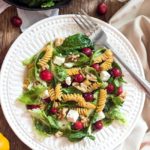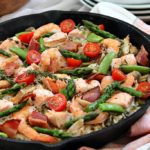For the first 5000 years of civilization, humans relied on foods and herbs for medicine. Only in the past 50 years have we forgotten our medicinal “roots” in favor of patent medicines. While pharmaceuticals have their value, we should not forget the well-documented, non-toxic and inexpensive healing properties of whole foods. The following list is but a sampling of the health benefits from whole foods. (for Part One A-C click here)
Date. High in natural aspirin. Has laxative effect. Dried fruits, including dates, are linked to lower rates of certain cancers, especially pancreatic cancer. Contains compounds that may cause headaches in susceptible individuals.
Eggplant. Eggplant substances, called glycoalkaloids, made into a topical cream medication have been used to treat skin cancers such as basal cell carcinoma, according to Australian researchers. Also, eating eggplant may lower blood cholesterol and help counteract some detrimental blood effects of fatty foods. Eggplant also has antibacterial and diuretic properties.
Fenugreek Seed. A spice common in the Middle East and available in many U.S. food markets. Has anti-diabetic powers. Helps control surges of blood sugar and insulin. Also anti-diarrheal, anti-ulcer, anti-diabetic, anti-cancer, tends to lower blood pressure, helps prevent intestinal gas.
Flax seeds and oil. Used primarily for constipation. In cases of gastritis, colitis or other inflammations of the digestive tract. Lowers blood fat levels often associated with heart attacks and strokes. Reduces harmful blood cholesterol levels with its soluble fibers. Prevents colon and breast cancer through its rich source of lignins, a documented anti-cancer agent. Improves moods, diminishes allergies and produces healthier skin.
Fig. Helps to prevent cancer. Both extract of figs and the fig compound, benzaidehyde, have helped shrink tumors in humans according to Japanese tests. Also laxative, anti-ulcer, antibacterial and antiparasitic powers. Triggers headaches in some people.
Fish and Fish Oil. An ounce a day has been shown to cut risk of heart attacks by 50 percent. The omega-3 oil in fish can relieve symptoms of rheumatoid arthritis, osteoarthritis, asthma, psoriasis, high blood pressure, Raynaud’s disease, migraine headaches, ulcerative colitis and, possibly, multiple sclerosis. Speaking of headaches, something else that may help reduce this is by improving your posture or even potentially limiting the amount of time you spend in front of a computer screen.
May help ward off strokes. A known anti-inflammatory agent and anti-coagulant. Raises good type HDL cholesterol. Lowers triglycerides. Guards against glucose intolerance and Type 11 diabetes. Some fish are high in antioxidants, such as selenium and Coenzyme Q-10 which is also known as coq10. Exhibits anti-cancer activity especially in blocking development of colon cancer and spread of breast cancer. Fish highest in omega-3 fatty acids include sardines, mackerel, herring, salmon, tuna.
May help ward off strokes. A known anti-inflammatory agent and anti-coagulant. Raises good type HDL cholesterol. Lowers triglycerides. Guards against glucose intolerance and Type 11 diabetes. Some fish are high in antioxidants, such as selenium and Coenzyme Q-10 which is also known as coq10. Exhibits anti-cancer activity especially in blocking development of colon cancer and spread of breast cancer. Fish highest in omega-3 fatty acids include sardines, mackerel, herring, salmon, tuna.
Garlic. Used to treat an array of ills since the dawn of civilization. Broad-spectrum antibiotic that combats bacteria, intestinal parasites and viruses. In high doses it has cured encephalitis. Lowers blood pressure and blood cholesterol, discourages dangerous blood clotting. Two or three cloves a day cut the odds of subsequent heart attacks in half in heart patients. Contains multiple anti-cancer compounds and antioxidants and tops the National Cancer Institute’s list as a potential cancer-preventive food. Lessens chances of stomach cancer in particular. A good cold medication. Acts as a decongestant, expectorant, anti-spasmodic, anti-inflammatory agent. Boosts immune responses. Helps relieve gas, has anti-diarrheal, estrogenic and diuretic activity. Appears to lift mood and has a mild calming effect. High doses of raw garlic (more than three cloves a day) have caused gas, bloating, diarrhea and fever in some. Aged garlic may be better than cooked garlic. Eat garlic both raw and cooked for all-around insurance.
Ginger. Used to treat nausea, vomiting, headaches, chest congestion, cholera, colds, diarrhea, stomach ache, rheumatism, and nervous diseases. Ginger is a proven anti-nausea, anti-motion sickness remedy that matches or surpasses drugs such as Dramamine. Helps thwart and prevent migraine headaches and osteo-arthritis. Relieves symptoms of rheumatoid arthritis. Acts as an anti-thrombotic and anti-inflammatory agent in humans; is an antibiotic in test tubes (kills salmonella and staph bacteria), and an anti-ulcer agent in animals. Also, has anti-depressant, anti-diarrheal and strong antioxidant activity. High in anti-cancer activity.
Grape. Rich in antioxidant compounds. Red grapes (but not white or green grapes) are high in the antioxidant quercetin. Grape skins contain resveratrol, shown to inhibit blood-platelet clumping (and consequently, blood clot formation) and boost good-type HDL cholesterol. Red grapes are antibacterial and antiviral in test tubes. Grape seed oil also raises good-type cholesterol.
Grapefruit. The pulp contains a unique pectin (in membranes and juice sacs—not in juice) that lowers blood cholesterol and reverses atherosclerosis (clogged arteries) in animals. Has anticancer activity, and appears particularly protective against stomach and pancreatic cancer. The juice is antiviral and high in various antioxidants, especially vitamin C.
Honey. Strong antibiotic properties. Has sleep-inducing, sedative and tranquilizing properties. Use sparingly as it is high in sugar.
Kale. Rich source of various anti-cancer chemicals. Has more beta carotene than spinach and twice as much lutein, the most of any vegetable tested. Kale is also a member of the cruciferous family, endowing it with anti-cancer indoles that help regulate estrogen and fight off colon cancer.
Kiwi Fruit. Commonly prescribed in Chinese traditional medicine to treat stomach and breast cancer. High in vitamin C.
Lemon. This citrus fruit ranks very high in its medicinal value, having many therapeutical uses. Lemon juice is a natural antiseptic which may be safely applied directly to cuts, bruises and infections. Lemon juice is good for asthma, headaches, pneumonia, and arthritis. It is a good general blood and body purifier and a mild diuretic. Do not take in cases of inflammations of the digestive tract. The juice also aids in the removal of old drug residues (poisons) from the body.
Licorice. Strong anti-cancer powers, possibly because of a high concentration of glycyrrhizin. Mice drinking glycyrrhizin dissolved in water have fewer skin cancers. Also kills bacteria, fights ulcers and diarrhea. May act as a diuretic. Too much licorice can raise blood pressure. Also it is not advised for pregnant women, according to this guide for pregnant women by HMHB. Only real licorice has these powers. Licorice “candy” sold in the United States is made with anise instead of real licorice. Real licorice says “licorice mass.” Imitation licorice is labeled “artificial licorice” or “anise.”
Photography: google images









7 Comments
Treatments For High Blood Pressure
July 25, 2013 at 7:44 amThis comment has been removed by a blog administrator.
Barbara F.
July 25, 2013 at 3:36 pmExcellent information. Saving this post for future reference! xo
Robyn
July 30, 2013 at 2:56 pmThanks for visiting, Barbara. Really enjoying your writing.
Mindy Whipple
July 26, 2013 at 1:23 pmI have tried a couple of these in the past with good results. I will keep the others in mind for the future. Always great to use something natural if we can!
Robyn
July 30, 2013 at 2:55 pmI agree, Mindy. I think it’s time that we all understand that it’s critical to be aware of what goes into our bodies. We pay more attention to the fuel in our car than the food that we eat!
Leslie
July 26, 2013 at 2:19 pmHi Robyn, Thanks for stopping by today! What a lovely blog you have and packed full of great information. This is a wonderful post and I couldn’t agree more! Modern medicine is there when we need it but avoiding illness in the first place is always best. Your recipes look delicious and I’ll look forward to exploring your blog.
Robyn
July 28, 2013 at 8:41 pmHi Leslie, a pleasure to meet you and I know I’ll be popping by your blog a lot for inspiration and beautiful imagery. Hope your weekend was fabulous!